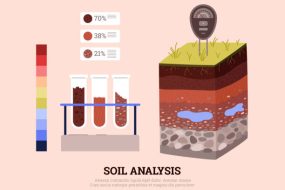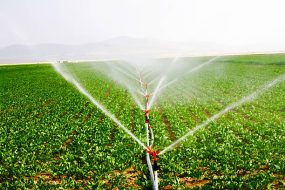When we sit down to enjoy a meal, we often take for granted the abundance and variety of food on our plates. However, the story of how our world went from struggling to feed its population to producing bountiful harvests is a fascinating one. At the heart of this transformation is the Green Revolution, an agricultural phenomenon that changed the way we grow food. One of the unsung heroes of the Green Revolution is crop rotation, a simple yet powerful farming practice that supercharged food production. In this article, we’ll explore the history, techniques, and remarkable impact of crop rotation.
The Green Revolution:
A Game-Changer in Food Production
Before we delve into the world of crop rotation, let’s set the stage with a brief overview of the Green Revolution. This period of dramatic agricultural advancement began in the mid-20th century and aimed to combat global food shortages. The Green Revolution introduced new technologies, crop varieties, and farming practices to boost crop yields. High-yielding crop varieties, synthetic fertilizers, and improved irrigation systems were some of the key components of this revolution. However, one of the less celebrated but equally crucial aspects was crop rotation.
What is Crop Rotation?
Crop rotation is a farming technique that involves changing the type of crop grown in a specific field over a sequence of planting seasons. Instead of planting the same crop year after year, farmers alternate between different crops. For example, they might plant corn one year, followed by soybeans the next, and then wheat in the third year before returning to corn. The specific rotation pattern can vary, but the idea remains the same: diversity in crops.
Also, Read>>>>>> Discover 10 Essential Facts Every Farmer Should Know About Crop Rotation
The Benefits of Crop Rotation
Crop rotation offers a myriad of benefits that contribute to increased food production and sustainable agriculture:
- Pest and Disease Management: Different crops have different vulnerabilities to pests and diseases. By rotating crops, farmers disrupt the life cycles of these threats, reducing the need for chemical pesticides.
- Nutrient Management: Different crops have varying nutrient requirements. Some crops deplete specific nutrients from the soil, while others replenish them. Crop rotation helps maintain soil fertility, reducing the need for excessive fertilizer use.
- Weed Control: Crop rotation can disrupt weed growth cycles, making it easier to control weeds without resorting to herbicides.
- Improved Soil Structure: Different root systems from diverse crops help enhance soil structure, making it more resistant to erosion and better at retaining moisture.
- Increased Yield: By optimizing soil health and minimizing pests and diseases, crop rotation ultimately leads to higher crop yields.
Historical Impact of Crop Rotation
Crop rotation is not a new concept. In fact, it has been practiced for centuries, with historical roots dating back to Roman and medieval times. However, its significance was truly realized during the Green Revolution.
During this period, the world faced a looming food crisis as the global population grew exponentially. Crop rotation, along with other agricultural innovations, played a pivotal role in averting this crisis. In many developing countries, farmers adopted crop rotation techniques, resulting in substantial increases in food production. This not only ensured food security but also contributed to economic growth and poverty reduction.
Also, Read>>>>>> Discover 10 Essential Facts Every Farmer Should Know About Crop Rotation
Crop Rotation Techniques
Crop rotation can take various forms, and the choice of crops to rotate depends on factors like climate, soil type, and local farming practices. Here are a few popular crop rotation techniques:
- Three-Year Rotation: This involves dividing the land into three plots. In the first year, you plant a crop like corn; in the second, soybeans; and in the third, wheat. After the wheat harvest, you return to corn. This cycle continues.
- Four-Year Rotation: Similar to the three-year rotation but with an additional year. For example, you might add a year of oats to the cycle.
- Crop Intercropping: This technique involves planting different crops side by side in the same field during the same growing season. For example, planting corn and beans together can provide mutual benefits, such as improved soil fertility.
Conclusion
The Green Revolution marked a turning point in human history by dramatically increasing food production and alleviating global hunger. Among the unsung heroes of this revolution, crop rotation stands out as a sustainable farming practice that played a vital role in boosting crop yields, reducing the need for chemicals, and maintaining soil health.
As we continue to face challenges related to climate change and the sustainability of our food systems, crop rotation remains a valuable tool in the farmer’s arsenal. Its historical impact and numerous benefits make it a practice worth celebrating and promoting. The Green Revolution may have begun in the mid-20th century, but the principles of crop rotation have roots that run deep in our agricultural history, reminding us that sometimes, the simplest solutions can have the most profound effects. So, the next time you enjoy a diverse and abundant meal, remember the role that crop rotation played in making it possible.
Also, Read>>>>>> Discover 10 Essential Facts Every Farmer Should Know About Crop Rotation












4 replies on “How did Crop Rotation Increase Food Production?”
[…] Crop rotation is a time-tested agricultural practice that involves alternating the types of crops grown in a specific field over a set period. It is an essential strategy in modern agriculture for several reasons, as it impacts both soil quality and crop health: […]
[…] Crop Rotation: Changing crop types seasonally to disrupt the life cycle of pests. […]
[…] Practicing crop rotation can help disrupt the life cycle of termites. Since different crops have varying susceptibility to termites, rotating crops can make it harder for termite populations to establish and thrive. […]
[…] Crop Rotation: Rotate your crops each season to disrupt the whiteflies’ reproductive cycle. Avoid planting the same crops in the same area for consecutive seasons. […]